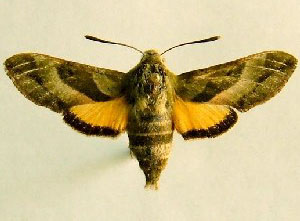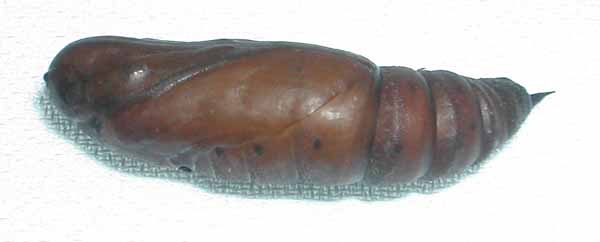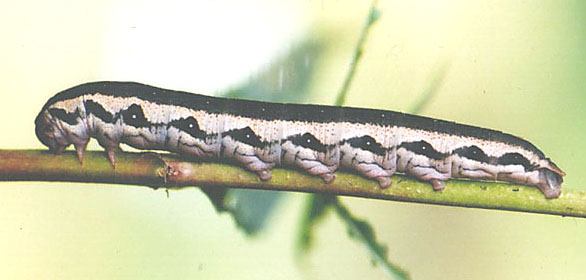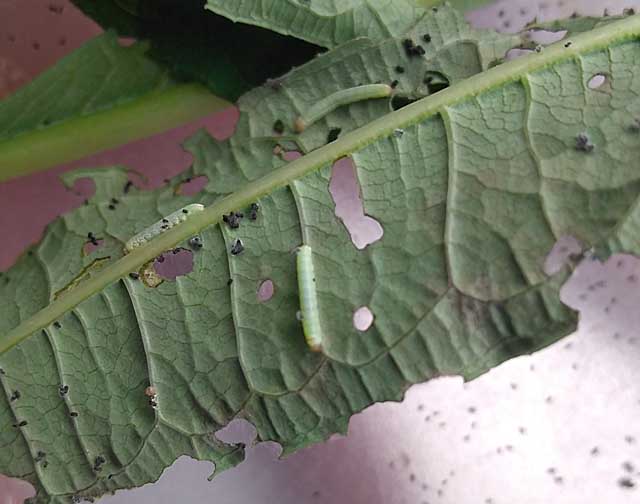
Proserpinus clarkiae first instars on Epilobium,
June 1, 2018, courtesy of Matthew J. Campbell.
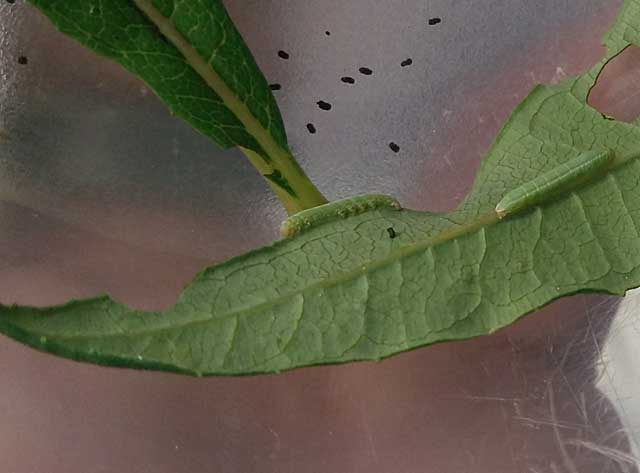
Proserpinus clarkiae first instars on Epilobium,
June 9, 2018, courtesy of Matthew J. Campbell.

Proserpinus clarkiae second instars on Epilobium,
June 9, 2018, courtesy of Matthew J. Campbell.

Proserpinus clarkiae third instars on Epilobium,
June 14, 2018, courtesy of Matthew J. Campbell.

Proserpinus clarkiae fourth instar, Umatilla County, Oregon,
June 15, 2018, courtesy of Matthew J. Campbell

Proserpinus clarkiae fourth instar, Umatilla County, Oregon,
June 15, 2018, courtesy of Matthew J. Campbell
Fully-grown caterpillars pupate and overwinter in burrows dug under stones and other solid objects.
Matthew J. Campbell also reports them on Epilobium (fireweed).
Use your browser "Back" button to return to the previous page.

